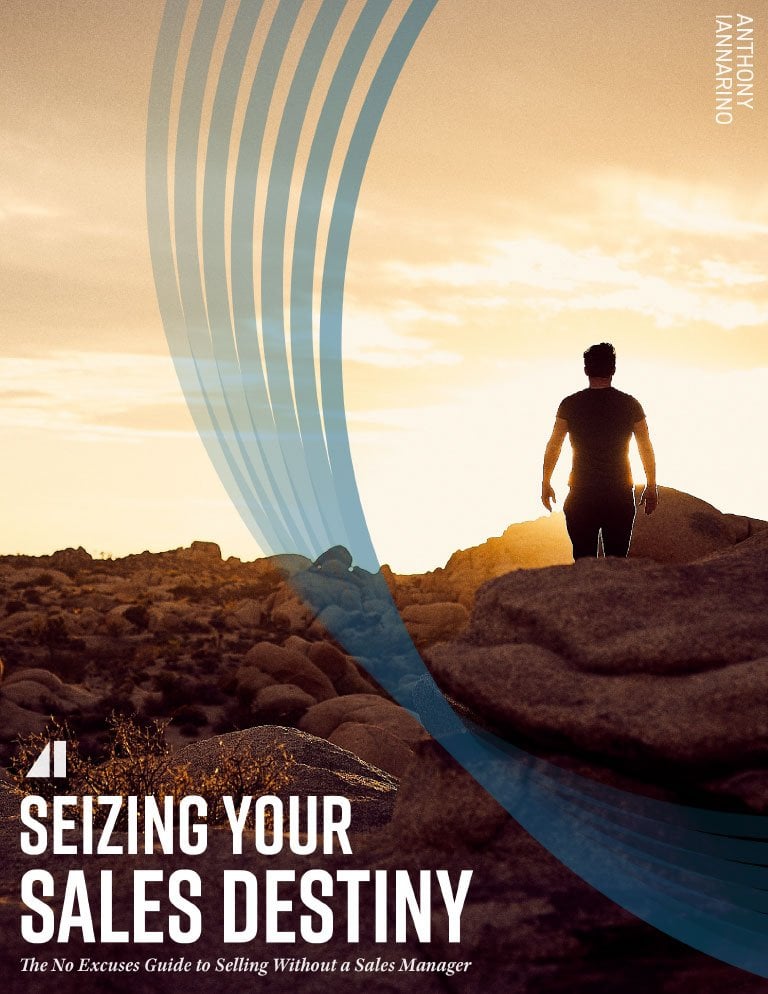A few weeks ago, I received an email from a person who wrote to me to share the advice he gave to salespeople. He had discovered that several people in the sales improvement business were conducting webinars, asking the participants to engage with them at the end of their presentation. He suggested that if the approach worked for what he called “sales gurus,” a term no one would embrace, salespeople should follow suit.
He accused sales improvement folks of being guilty of a “Do as I say, not as I do,” suggesting salespeople start doing webinars, pitching their products at the end, a poor idea for a host of reasons. The person who wrote the note confused sales with content marketing and lead generation. He was also mistaken about what sales improvement professionals do when they sell, somehow believing that it requires only a marketing campaign and not the execution of a sales process.
There are a lot of things that are mistakenly described as sales, including content marketing.
Marketing Is Not Sales
Marketing is not sales, and neither is lead generation. Brand building isn’t selling either. While these things may be important and may contribute to sales, they are not sales. Large parts of the confusion around sales and marketing are the result of the technology, especially the new mediums that emerged as a result of the internet.
There is a reason you no longer hear anyone utter the words “social selling.” All of those who called themselves such have discontinued that practice. The term social selling was a set of practices that were mostly brand building and the marketing of oneself to make it easier to engage with prospects. The fact that an individual got attention didn’t mean that they still didn’t have to sell, a process that required them to use a channel other than Twitter.
Marketing, lead generation, and brand building are adjacent to sales. It is possible to be excellent at marketing and brand building while being a terrible salesperson.
Email Is Not Sales
Email is one of many tools salespeople use to engage with their prospects and clients. Some people have deep expertise in crafting emails, and because it is so widely used, there is every reason to improve your emails. While email is a valuable part of an outbound strategy, it isn’t selling.
However, some believe that all prospecting can be done using automated email sequences, using technology’s brute force approach to acquire meetings. One man’s fully-automated email sequence is hundreds or thousands of people’s spam, and a cause to liberally hammer on the delete key as they process their email.
Some salespeople expect too much of the medium. They believe they should kowtow their prospective client’s preference to conduct the conversation as pen-pals and avoid having to talk to a salesperson who might straight pitch them, only to have the salesperson straight pitch them over email. Later, the salesperson suggests the prospect “went dark,” even though they were never really engaged.
Why one believes that a person is going to make a significant change and spend equally significant money without being willing to commit to a meeting to talk about what they want is a mystery.
Technology Is Not Sales
There are many useful technological tools you can use to create efficiency in sales. I hope you have a “sales stack” that includes a CRM and Engagement Platform, and maybe a source that allows you to find your prospective client’s contact information. Some people care deeply about applying these tools, all of which are important and necessary, while also not being sales.
If one wanted to improve their efficiency in sales, technology would be a good place to start. You may not want to keep a cardboard box of business cards as the primary container of all your contacts and information, especially when you need to track the important interactions you have with those clients. You might also find it helpful to manage your opportunities and your pipeline in something better than an Excel spreadsheet.
While technology is important, it is not sales, nor is it selling.
Selling Sales
Good marketing may be enough to have people buy from you, but if you are a salesperson, you can be certain the leadership of your company doesn’t believe this is true. The prevalence of technology and the size of sales stacks has seemed to be inversely proportional to the attainment of quota, perhaps the result of believing that things connected to B2B sales can improve sales.
One might suspect that the technological marketing tools and sales tools combined have caused many to perceive a modern sales approach as transactional at the very time that buyers require a more strategic approach, one centered on value creation, the need to better understand and make sense of their world, as well as understanding the context that would allow them to make the right decision.
Improving sales means improving the ability to create value for the client throughout the sales conversation. Improving your ability to create opportunities and capture them for and with your prospective clients means improving as a salesperson, something that cannot be accomplished through marketing or by outsourcing the role to technology and tools.
The greatest market advantage you might create to dominate your category would be to have improved your sales effectiveness, eliminating any belief that improving the things adjacent can make up for an inadequate sales approach, poorly executed.

Get the Free eBook!
Learn how to sell without a sales manager. Download my free eBook!
You need to make sales. You need help now. We’ve got you covered. This eBook will help you Seize Your Sales Destiny, with or without a manager.
Download Now







.jpg?width=768&height=994&name=salescall-planner-ebook-v3-1-cover%20(1).jpg)


